Research
Estimating the heat-related burden of diabetes and health co-benefits of climate policy
More than 3 million people were living with diabetes in England in 2019, and it is projected that this number will increase over the next 25 years. Through this project, I will calculate number of deaths, hospital admissions and costs to NHS attributable to exposure to higher temperatures among people with diabetes. I will evaluate future costs and number of hospital admissions and deaths using different temperature rise scenarios. I will identify vulnerable groups among people with diabetes, e.g., older, more deprived or exposed to poor air quality, and based on these results, propose targeting these populations through the Heat-Health Warning System and GP consultation during a heat event. Finally, through quantifying these vulnerabilities it is possible to determine the positive effects of policies such as the Ultra-Low Emission Zone in London on mitigating the impact of heat induced hospitalisation and death in people with diabetes.
Direct and indirect effects of the COVID-19 pandemic on mortality in Switzerland
Assessing the direct (deaths followed a SARS-CoV-2 infection) or indirect (deaths caused or avoided due to our response to tackle the virus) impact of the COVID-19 pandemic on population-level mortality, is challenging but central to gauging the appropriateness of COVID-19 control measures. We Bayesian modelling and found that COVID-19 was directly responsible for an estimated 18,000 deaths during the study period, during which only around 13,000 laboratory-confirmed COVID-19-related deaths were reported. After accounting for laboratory-confirmed COVID-19-related deaths, we estimated approximate 4,000 fewer deaths than expected, suggesting weak evidence of a protective effect of the pandemic measures. This effect primarily concerned younger age groups. Our study has important implications for the ongoing debate about the appropriateness of COVID-19 control measures.
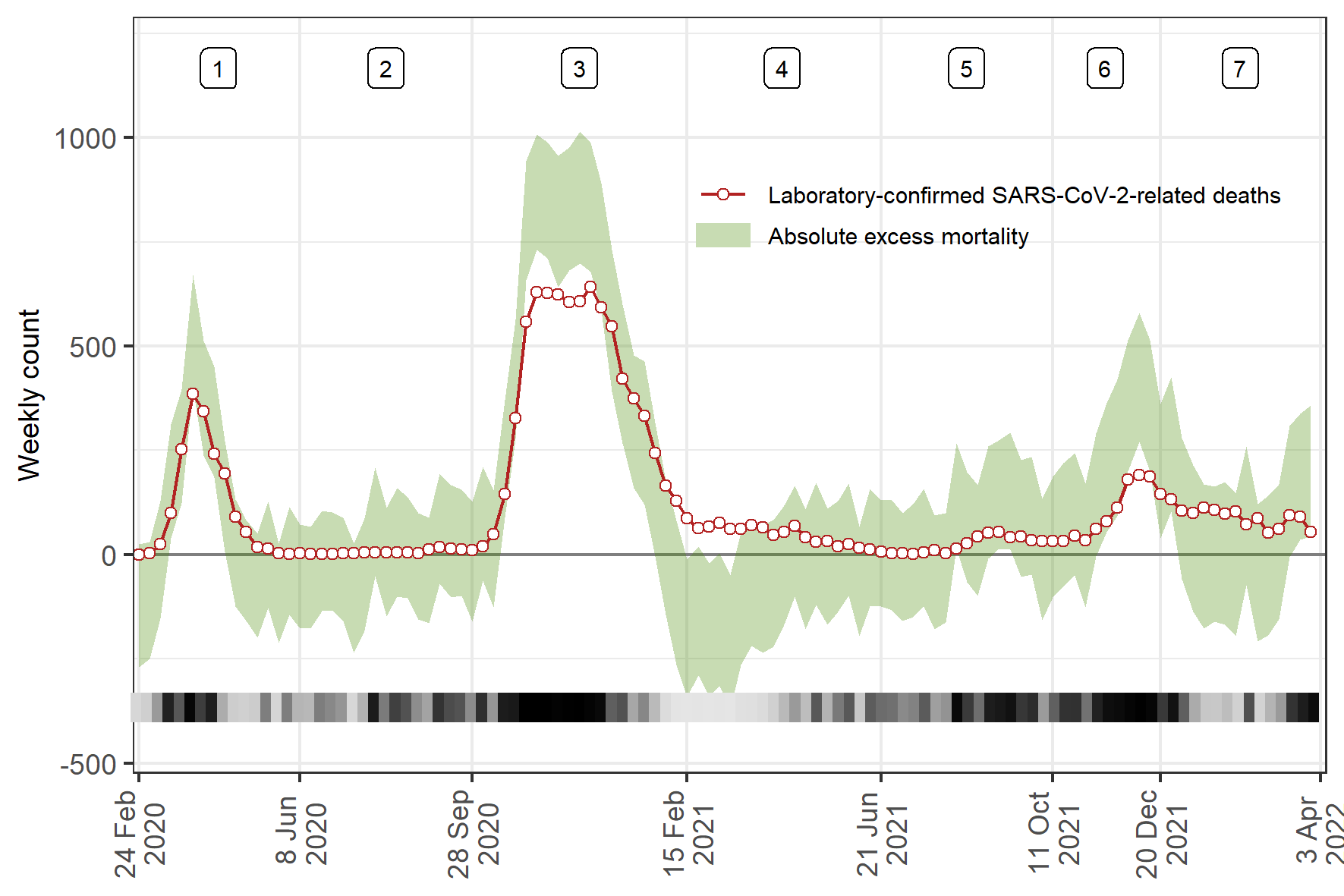
COPD and heat exposure
In this research, I developed Bayesian hierarchical models to quantify the effect of heat exposure to COPD hospitalisation during 2007-2018 in England. I used a spatial varying coefficient to identify spatial vulnerabilities of COPD hospitalisation and used factors such as deprivation, urbanicity, mean ambient temperature and green space to explain the observed spatial vulnerabilities. I also calculated the population attributable function and assuming a causal effect, 6 280 (95% CrI 3 441 to 8 993) COPD hospitalisations were attributable to heat exposure.
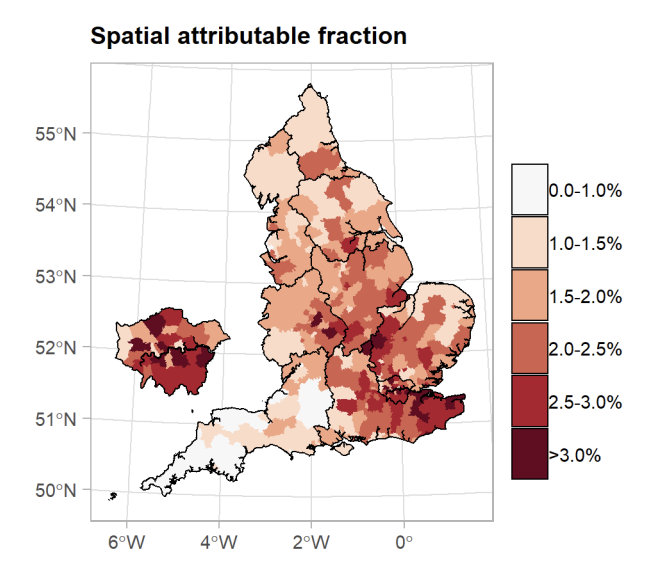
Regional excess mortality during the 2020 COVID-19 pandemic
Focusing on 5 European countries, Enlgand, Greece, Italy, Spain and Switzerland, we calculated the excess mortality during the 2020 COVID-19 pandemic at the subnational level. With around 30%, Madrid, Castile-La Mancha, Castile-Leon (Spain) and Lombardia (Italy) were the regions with the highest excess mortality. In England, Greece and Switzerland, the regions most affected were Outer London and the West Midlands (England), Eastern, Western and Central Macedonia (Greece), and Ticino (Switzerland), with 15-20% excess mortality in 2020.
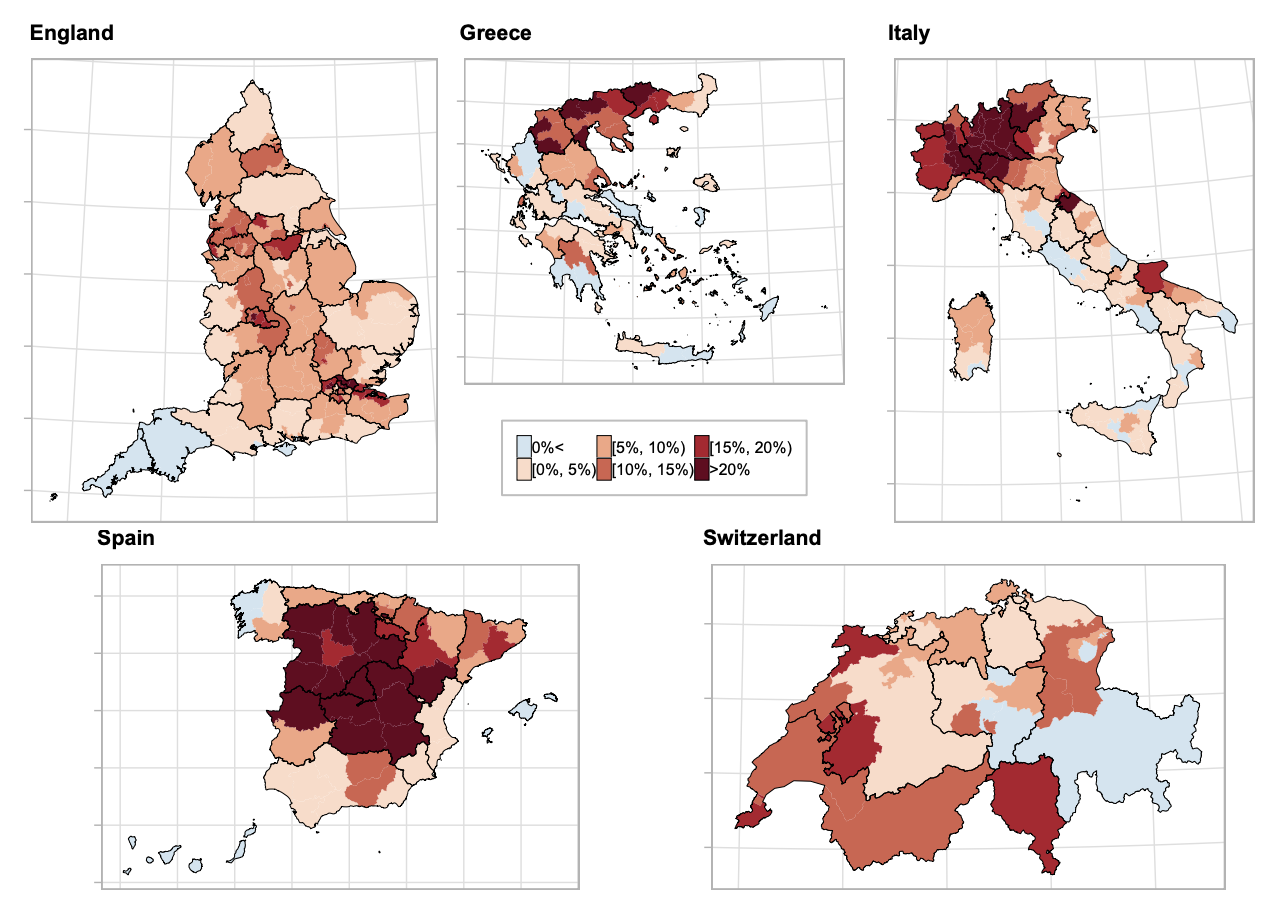
COVID-19 and air-pollution
In this research, I am developing spatial Bayesian hierarchical model to quantify the effect of long term exposure to air-pollution, namely NO2 and PM2.5 on COVID-19 mortality. The first analysis showed that for every 1μg/m3 increase in the long term averaged NO2 exposure the COVID-19 mortality increases by 0.5% (95% credible interval: -0.2%, 1.2%), whereas the results for PM2.5 are more uncertain 1.4% (-2.1%, 5.1%). Currently we are working on including known comorbidities, such as chronic obstructive pulmonary disease and diabetes and examine the mediation effect.
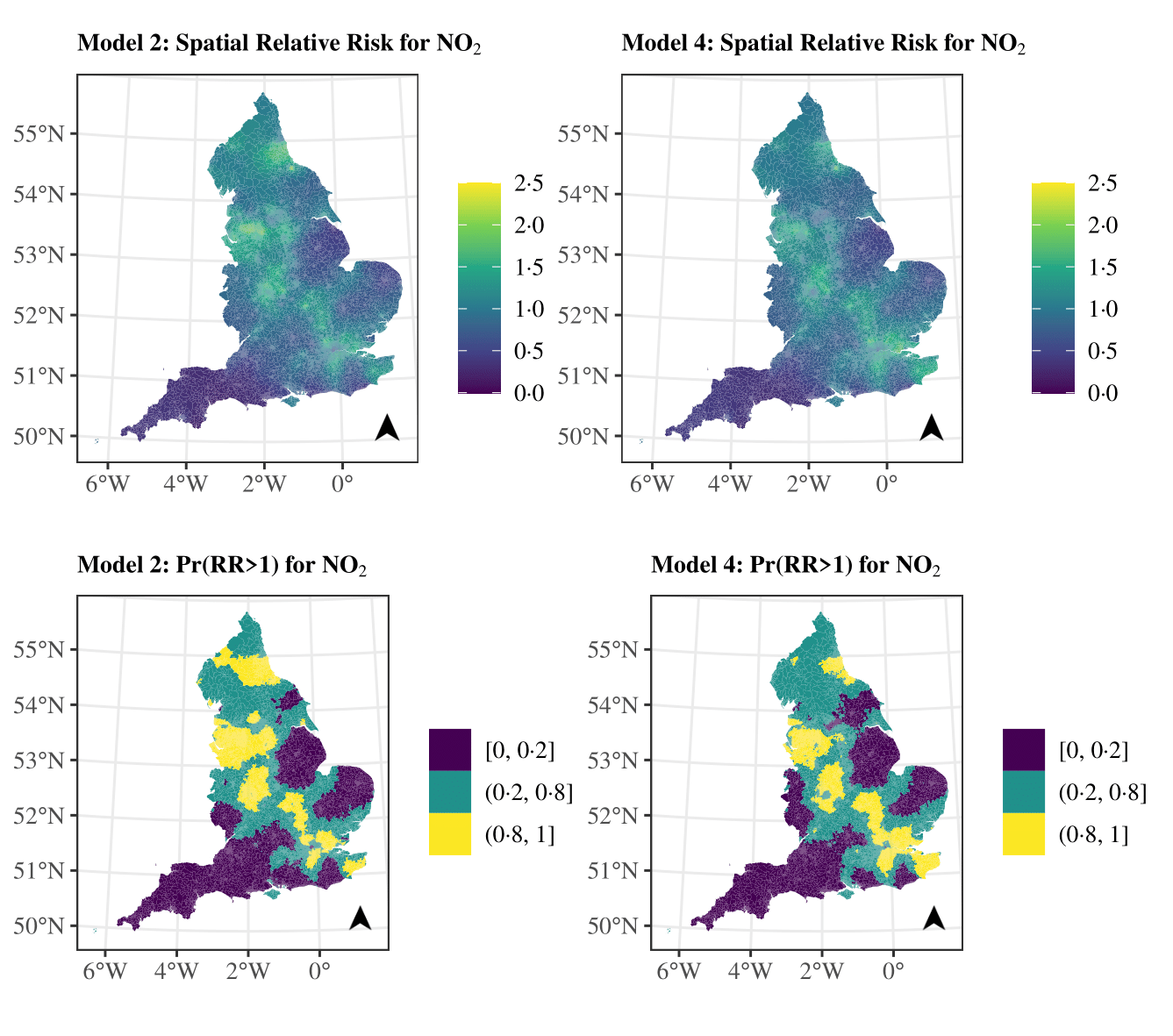
Evaluating the burden of climate-related respiratory disease using high resolution spatiotemporal models
In this research, I will develop a framework of analysis using spatiotemporal models to evaluate climate-related disease burden. The methodology of this project builds on Bayesian spatiotemporal models for risk assessment and quantification of associated economic costs, hence model and parameter uncertainty will be naturally propagated across the proposed framework. I will use this approach to estimate the temperature-related respiratory health burden in the UK and communicate results to stakeholders and public health experts to implement relevant public health strategies. This is an interdisciplenariy project with several national and international collaborations including Prof Blangiardo (main supervisor), Prof Baio and Dr Mineli (co-supervisors) but also with Dr Gasparrini, Prof Schuhmacher, Dr Bhatt, Dr Ballester and Dr Vicedo-Cabrera.
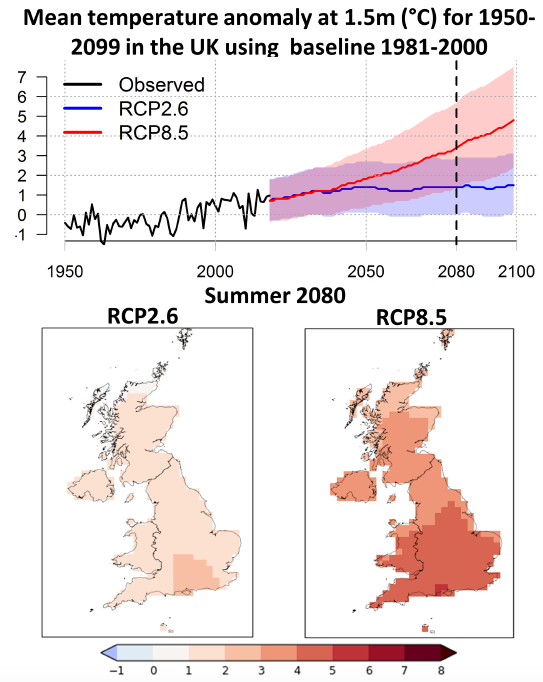
Analysis of spatial clustering of childhood cancers
My thesis was entitled “Analysis of spatial clustering of childhood cancers” and it was the first systematic investigation of the spatial clustering of childhood cancers in Switzerland. The first part of my PhD was focused on global clustering and cluster detection, whereas the second part on disease mapping and spatial regression. During the second part of my PhD I gained expertise on models commonly used in spatial epidemiology, like log-Gaussian Cox processes and the Besag-York-Mollie model.
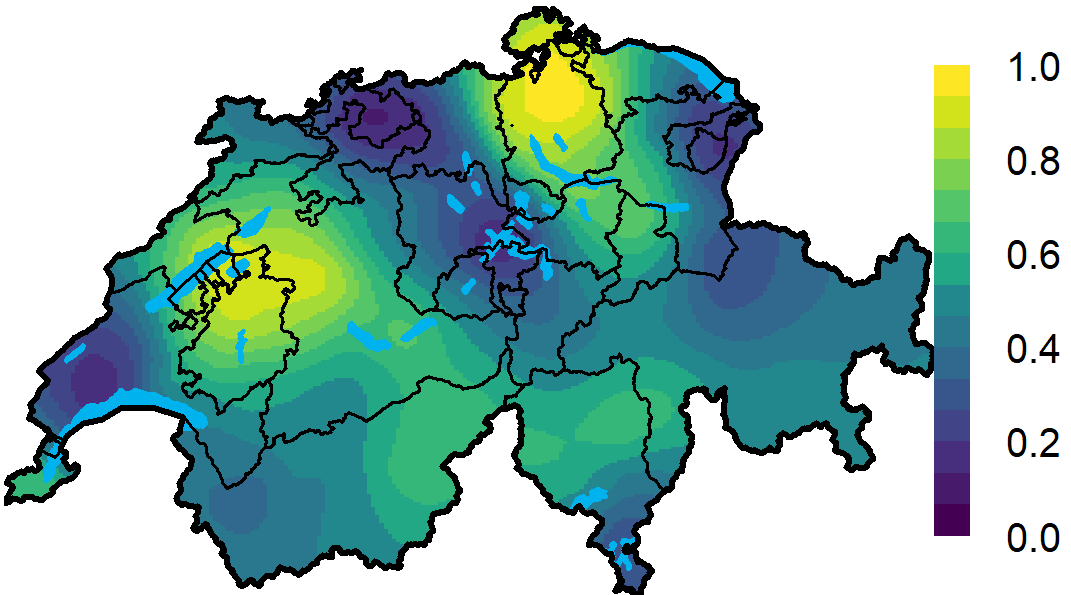
Grants
-
Estimating the heat-related burden of diabetes and health co-benefits of climate policy (2023-2027)
-
Evaluating the burden of climate-related respiratory disease using high resolution spatiotemporal models (2019-2023)
-
Residential and occupational exposure to ultraviolet radiation and hematological malignancies (2019-2020)
-
Low dose ionising radiation and childhood cancer (2018-2021)
